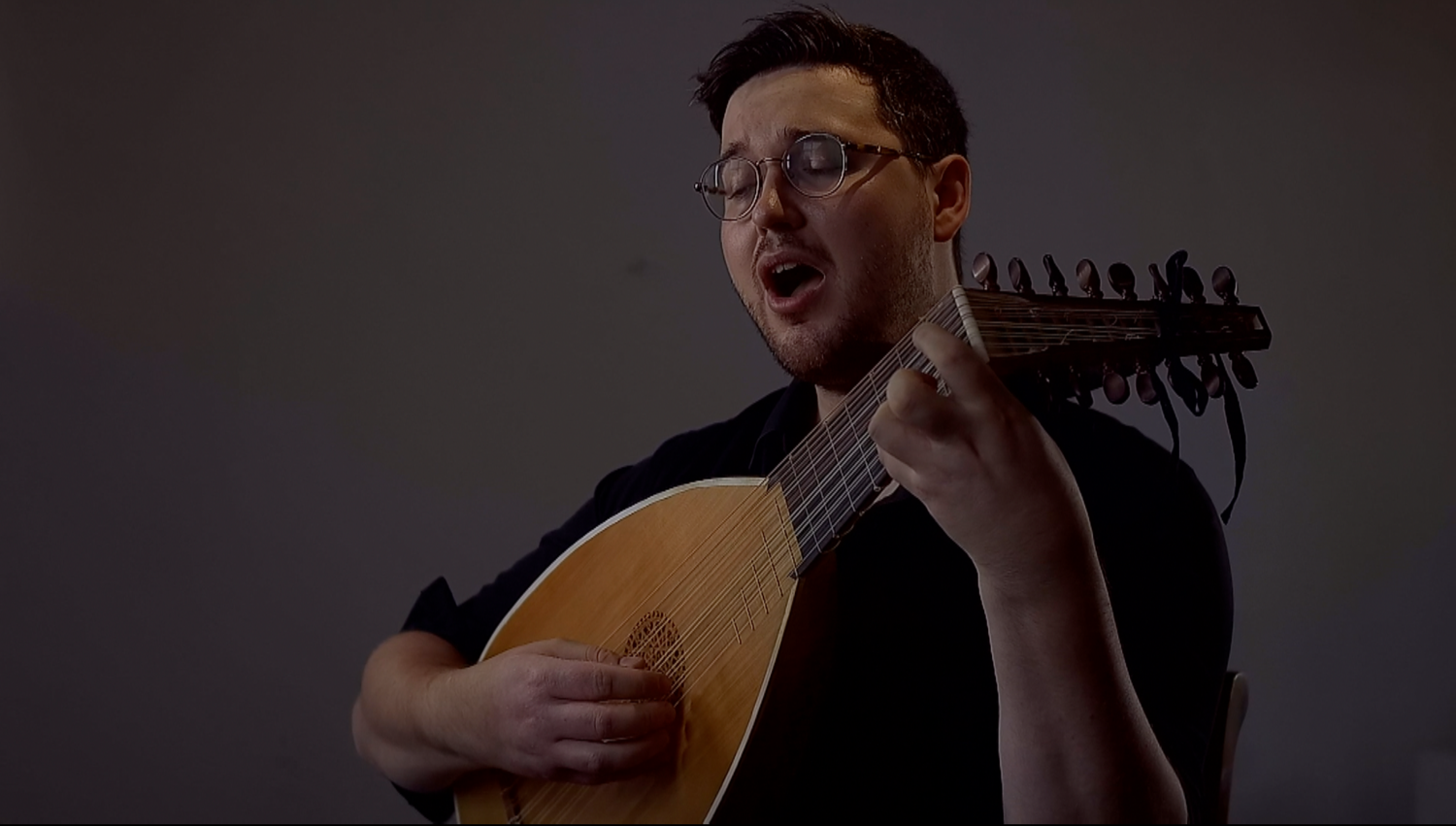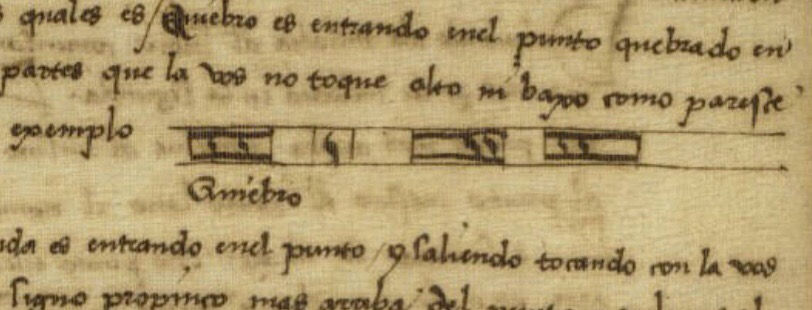An Anonymous Set of Instructions for Ornamenting Plainchant (c.1475-1525)
- Tim Braithwaite

- Jun 29, 2021
- 3 min read
[fol. 22r.] Chapter two: of the definition and the division of melodía
Melodía is to adorn and to grace the sounds of plainchant. Melodía is divided into three parts: Melodía on a single note, melodía when ascending, [and] melodía when descending, of which we will give an example in order according to their names, figures, and definitions.
Chapter Three: of melodía on a single note
Melodía on a single note [can be made] in four ways, namely, ‘Quiebro’ [break/bend], ‘Onda’ [wave], [and] ‘Tremolacio’ [tremble], the definitions of which are [as follows]:
The Quiebro is introduced on the note, breaking the voice into two parts so that the pitch does not touch higher or lower, as it appears for example:

The Onda is introduced on and deviates from the note, touching the pitch immediately above the note with the voice, and returning to the same note, as it appears for example:

The Tremolacio is [when] all or the most part of the note trembles, neither touching the extremes above nor below, as it appears for example:

Dos Ondas is a repeated Onda, as shown above and as it appears for example:

[fol. 22v.] Chapter Four: of melodía when ascending
In ascending and descending Melodías, the Travado is only to be used in plainchant, the definition of which is as follows: the Travado is a syllable which is linked to the sound of the previous syllable, and is for the most part from a syllable of the same word, and is mostly on a long syllable, as it appears for example:

———————————————————————————————————
[fol. 22r.] Capitulo secundo de diffinición y división de melodía
Melodía es ornar y agraciar los sones del canto lano. Melodía es partida en tres partes: Melodía en un mesmo punto, melodía en subiendo, melodía [en] descendiendo, de les quales seguns sus nombres y figuras y diffiniciones daremos exemplo por orden.
Capitulo terço de melodía en un mesmo puncto
Melodía en un mesmo punto en quatro maneras,es assab(er), quiebro, onda, tremolacio,dos ondas, la diffinción de los quales es:
Quiebro es entrando en el punto, quebra[n]do en dos partes que la vos no toque alto ni baxo, como paresce por exemplo
Onda es entrando en el punto y saliendo, tocando con la vos en el signo propinco más arriba del punto, y volver al mismo punto, como paresce por exemplo.
Tremolacio es todo el punto o la maior parte d’el tremolar… no tocando en ninguno de los estremos arriba ni baxo, como paresce por exemplo.
Dos ondas es onda doblada, come paresce arriba y como paresce por exemplo.
[fol. 22v.] Capitulo quarto de la melodía subiendo
En la melodía subiendo y descendiendo se a de sobreponer al travado solament por el canto lano, del qual la diffinición es açi: Travado es sillaba que viene trave del son de la sillaba posada, y esto por la maior parte que la sillaba sea de una mesma dictión, y en sillaba longa por la maior parte, come paresce por exemplo.
——————————————————————————————————— *Notes*
Biblioteca de Catalunya, Ms. 1325/2. Available online at
<https://mdc.csuc.cat/digital/collection/manuscritBC/id/296386>.
Text transcribed in consultation with Karl-Werner Gümpel, “El canto melódico de Toledo: algunas reflexiones sobre su origen y estilo,” Recerca Musicológica 8 (1988), 25–45. My translation, with many thanks to Jonatan Alvarado for his help with troublesome passages.
At the rest of the chapter describes and depicts a number of different ways of ornamenting intervals of different sizes. I’ll publish a translation on this page at some point in the future, but for those interested, the manuscript can be viewed and downloaded here: https://mdc.csuc.cat/digital/collection/manuscritBC/id/296386>.




Comments